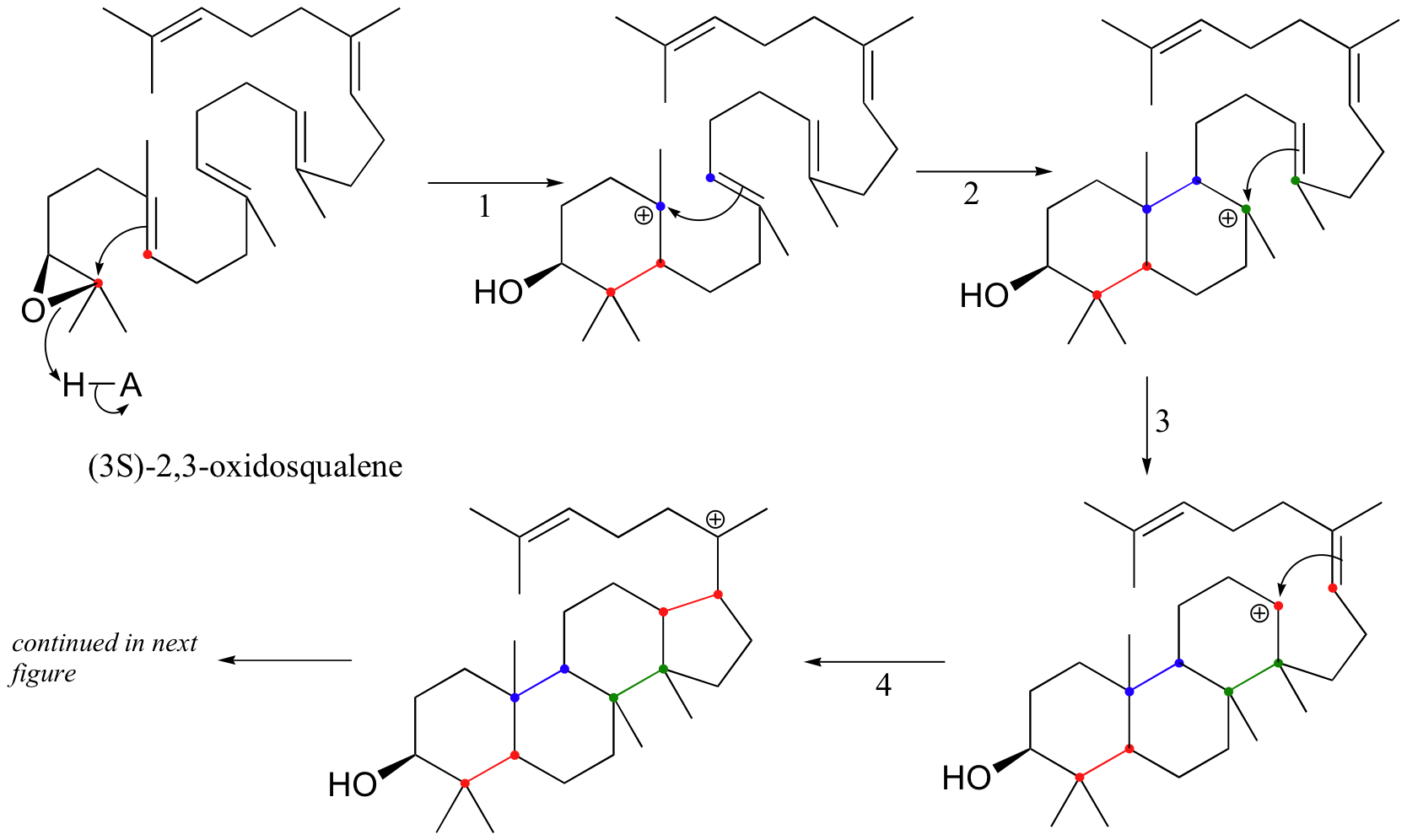
Biosynthesis of Steroids
 المؤلف:
..................
المؤلف:
..................
 المصدر:
LibreTexts Project
المصدر:
LibreTexts Project
 الجزء والصفحة:
.................
الجزء والصفحة:
.................
 25-12-2019
25-12-2019
 2964
2964
Biosynthesis of Steroids
On the diagram below, the series of cation-like cyclizations and rearrangements, known as the Stork-Eschenmoser hypothesis, is shown, which were identified in the biosynthesis of the triterpene lanosterol. Lanosterol is a precursor in the biosynthesis of steroids. This takes place by metabolic removal of three methyl groups and degradation of the side chain.

Rearrangements are particularly important in carbocation-intermediate reactions in which isoprenoid molecules cyclize to form complex multi-ring structures. One of the key steps in the biosynthesis of cholesterol is the electrophilic cyclization of oxidosqualene to form a steroid called lanosterol.

This fascinating reaction has two phases. The first phase, in which the actual cyclization takes place, is a series of electrophilic addition steps. The second phase is a series of hydride and methyl shifts. There is some argument about whether these processes occur in a stepwise fashion (with discreet carbocation intermediates) or in a concerted manner. For the sake of clarity, we will show the reaction proceeding stepwise. The cyclization phase begins with attack by pi electrons on an epoxide electrophile .

Steps 2, 3, and 4 are simply successive attacks by pi electrons on the carbocation generated by the previous attack. The overall result of this electrophilic cascade is the opening of the epoxide ring, and closure of three six-membered and one five-membered ring. Next comes the rearrangement phase of the reaction. which is a series of two hydride shifts and two methyl shifts, followed by a proton abstraction which finally quenches the positive charge to form lanosterol.


 الاكثر قراءة في الدهون
الاكثر قراءة في الدهون
 اخر الاخبار
اخر الاخبار
اخبار العتبة العباسية المقدسة


